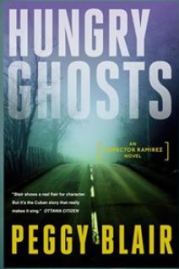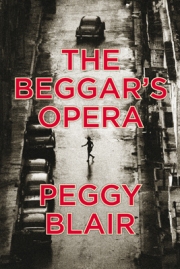A lot of authors (including me) find it easy to get hung up on our Amazon ratings. We track them obsessively. It’s pretty addictive. As one New York Times article says, there ought to be a 12 step program. And when we get into the vaulted top 100 for our category, wow!
We must have sold a pile of books, we think. Then we find out our actual book sales and wonder what the heck happened.
Amazon is very secretive about the algorithm it uses, so there’s a lot of speculation on the Internet as to how they arrive at those rankings. Also, sales are weighted, and ranked relative to other author’s sales, making it hard to interpret the data.
I recently discovered a program called NovelRank that is supposed to take some of the guesswork out. You enter a novel’s ISBN and name and it tracks Amazon sales hour-to-hour, and prepares a daily chart for you. (SalesExpress.com does the same thing, but it doesn’t cover Canada.)
Unfortunately, as I learned this week, NovelRank treats each order as a single book sale, even if the order is placed for multiple books, so it’s not all that accurate.
For example, I ordered five books to replenish the ones I’d sold at my office and at events. That sale was recorded as one sale by NovelRank, not five. Same thing a few days later when I bought two more.
NovelRank’s high/low rankings don’t make much sense either. I’ve been much higher (top 50) and much lower (bottom 45,000) in the rankings than its figure suggests. (It has me at a best rank of 6,262 in Mystery/Thriller and a worst rank of 7,033 when I am in fact ranked at 10,094 as I write this.)
What I did find out, though, was that the purchase of even one book (assuming that not everyone buying from Amazon is placing multiple orders like me) was enough to move The Beggar’s Opera up several thousand places.
One day last week, for example, a single sale moved me from around #10,000 to #98 although I quickly fell back down. Two sales the next day (in separate purchases, according to NovelRank) and bingo, and I hit #34.
This kind of volatility is not uncommon. As that same New York Times article points out, “A book that is the millionth-largest seller on Amazon might surge hundreds of thousands of places with one sale.”
Which means that “Amazon bestseller” doesn’t necessarily mean an author sold a lot of books. A handful of books can make a big difference.
One an American analyst who has looked closely at Amazon’s American rankings and done some complicated graphing that’s beyond my math skills says this:
“The idea behind my reverse-engineering the ranking system was always to give rough idea of how a title was selling, not an exact number. So, don’t read an average rank of 10,000 to mean you sold exactly 60 books that week, or a rank of 100,000 to mean you sold ten and a half copies – Amazon doesn’t sell half copies.
“Read an average rank of 1,000 to mean you have a seriously successful title, an average rank of 10,000 to mean you’re doing pretty good for a book that’s no bestseller, an average rank of 100,000 to mean it’s not going to contribute significantly to your income, and an average rank of 1,000,000 to mean you need to take a break from checking sales ranks.”
No kidding! Now remember, he’s writing about the U.S. market, which is at least ten times larger than Canada. It may mean that an average rank of 1,000 means you’ve sold six books that week. But who knows? Only Amazon.
(By the way, a few minutes later, I am now at #9,065, so I’ve risen in ranks, but without making a sale according to NovelRank. It’s that crazy algorithm at work. Maybe someone returned another mystery author’s book?)

















Congaraulations on your sales rank, Peggy!
Ignore the sales figures on NovelRank. They are so far out it’s ridiculous. I actually contacted the site owner after I discovered someone had submitted Thin Blood for tracking, telling him that my sales were over EIGHTY times the figure he had. His response:
“The book was added on June 13, so it is only counting 1/2 the month. However, 8x’s more is notable, and I can see why… the current sales rank is 16, so congratulations! I have not received enough data from authors like you to be more accurate for books with a sales rank so low. Currently, books that average less than 4000 in sales rank are all treated the same.”\
8x – it was 80x! (One of the advantage of being self-published is I get to see the sales as they happen.)
LikeLike
Oops… sorry about the typo. I meant CONGRATULATIONS!
LikeLike
Very interesting, Vicki, and thanks for passing that on. It just goes to show that there is no reliable way of tracking this info except in your situation, ie. where you are self-pubbed. Congrats, by the way, on your numbers!
LikeLike
Thanks, Peggy, but that was back in 2010.
I see TBO is now #2,153 in Books and #64 in Books > Mystery & Thrillers > Mystery. Wahoo! You might not know how many copies you’re selling, but your daily sales are definitely increasing.
LikeLike
Are you no longer self-published? Not clear re. your reference to 2010? (And thanks — the book seems to have picked up a little steam over the weekend.)
LikeLike
Sorry, Peggy. I meant it was 2010 for those numbers.
The trad-pub option is not off the burner, though. Stay tuned… 😉
LikeLike
You may not thank me for this, Peggy, but another way to keep track of your sales/rank is this:
http://tracker.kindlenationdaily.com/tracked-books
Use at your own risk!
LikeLike
Luckily for me, Toni, it doesn’t track Canadian books either!
LikeLike
Interesting article – thanks for sharing! I’m also guilty of habitually checking my sales and rank, but I’ve gotten better at distracting myself from it.
P.S. This is why I’m a writer…I hate math. 😛
LikeLike
Hi Peggy! I found your blog because I was trying to research the Canadian Amazon market. My book is currently #79 in the Canadian Kindle store so I was curious about how that rated compared to the American Amazon market. This was a very informative post. Thanks!
LikeLike
Great -glad you found it helpful!
LikeLike
I hope I don’t become addicted to chasing the rankings! Niche market, quality and design is certainly a key to success in today’s hyper-competitive world of publishing.Thanks for telling us about your experience.
I saw some evidence recently that if you’re ranked 100,000 in Amazon bestseller that means your book is selling about 7 to 16 copies a week. Does that sound right? My title did sit in that zone, but it was also pleasing to hit a bestseller subcategory:
Amazon Bestsellers Rank:
#10 in Books > History > Essays, Journals, Letters & True Accounts > 16th-18th Centuries.
I’m not planning to take early retirement on the royalties, however, as my academic royalties tend to be in the region of $100 annually!
Thanks again for sharing your experience.
LikeLike
I think a 100,000 ranking in Canada means you’re probably selling 7-16 copies a year 😦 Not sure what it translates into in the US.
Your academic book is flourishing compared to mine! I think I made the grand total of $ 19 last year for Lament for a First Nation… sigh.
Thanks for checking in!
LikeLike